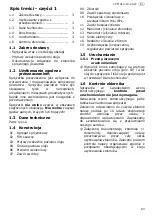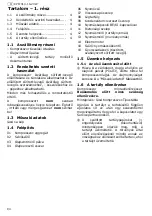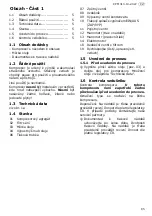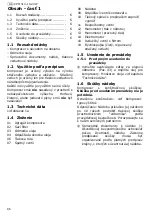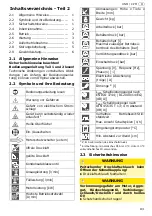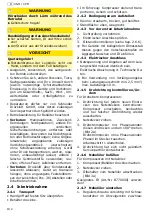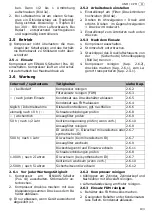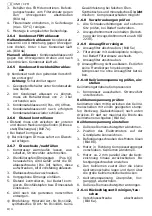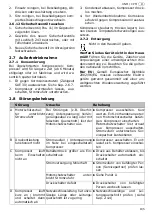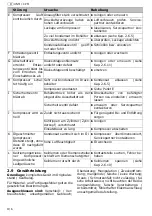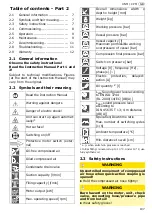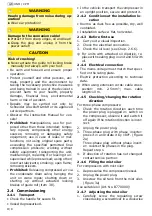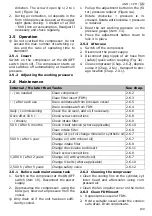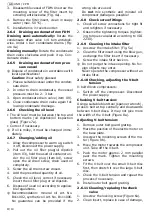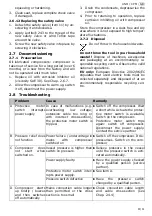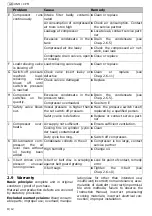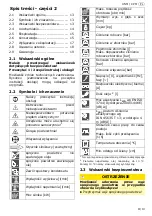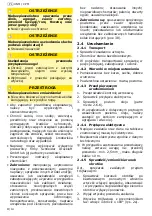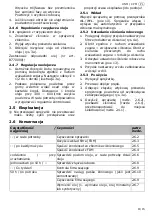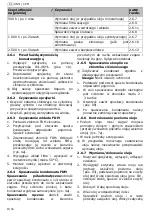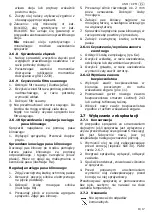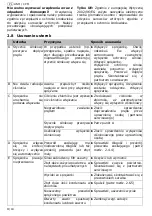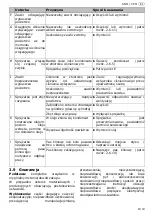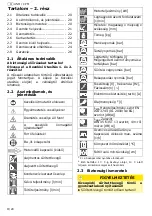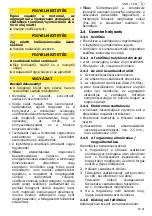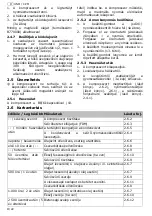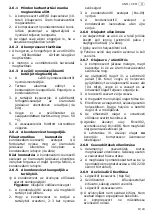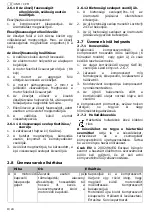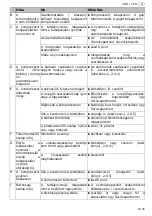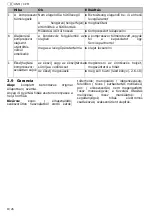
UNM / CPM
II/11
GB
squeezing or hardening.
3. Clean seat, replace complete check valve
if damaged.
2.6.12 Replacing the safety valve
1. Detach the safety valve (item 11) by un-
screwing it anticlockwise.
2. Apply Loctite® 243 to the thread of the
new safety valve or wind Teflon tape
around the valve.
3. Screw the new safety valve into place by
screwing it clockwise.
2.7 Decommissioning
2.7.1 Preservation
Oil-lubricated compressors: compressor is
taken out of service for a long period (over 6
months) or is new from the factory and will
not be operated until much later.
1. Replace oil with corrosion inhibitor oil
(viscosity SAE 30). See Chap. 2.6.7.
2. Allow the compressor to warm up, switch
it off, disconnect the power supply.
3. Drain the condensate, depressurise the
compressor.
4. Prior to returning to operation, replace
corrosion inhibiting oil with compressor
oil.
Store the compressor in a dust-free and dry
area where it is not exposed to high temper-
ature fluctuations.
2.7.2 Disposal
Do not throw the tool in your household
waste!!
Dispose of machines, accessories
and packaging at an environmentally re-
sponsible recycling centre. Observe the valid
national regulations.
EU only:
European Directive 2002/96/EC
stipulates that used electric tools must be
collected separately and disposed of at an
environmentally responsible recycling cen-
tre.
2.8 Troubleshooting
Do not throw in the household waste.
Problem
Cause
Remedy
A Protective motor
switch interrupts
power supply
In case of malfunctions (e.g.
overheating; low voltage;
extension cable too long or
with incorrect cross-section),
the protective motor switch is
tripped.
X
Switch off the compressor. Wait
a short while. Actuate the protec-
tive motor switch is available.
Switch on the compressor.
Protective motor switch trips
again: switch off compressor.
Disconnect the power supply.
Contact the service partner
B Pressure relief does
not function
Power failure / undervoltage in
mains with compressor
switched on
X
Switch off the compressor. It de-
pressurises. Switch on the com-
pressor
C Compressor does
not start when
switched on.
Vessel pressure is higher than
switch-on pressure.
X
Relieve pressure in the vessel
until the pressure switch is acti-
vated automatically.
Power supply faulty.
X
Have the power supply checked
by a qualified person (service
partner).
Protective motor switch inter-
rupts power supply.
X
See item A.
Pressure switch defective
X
Have the pressure switch
changed by a qualified person.
D Compressor starts
up briefly / buzzes
and then switches
off automatically
Mains connection cable longer
than permitted or the cross
section is too small
X
Check connection cable length
and cable cross-section (see
Chap. 2.4.4)
Summary of Contents for CPM 310-10-20 W
Page 51: ......

